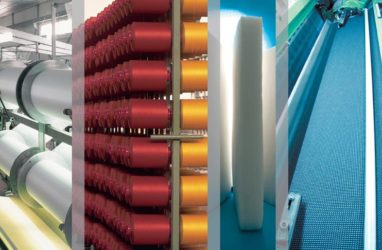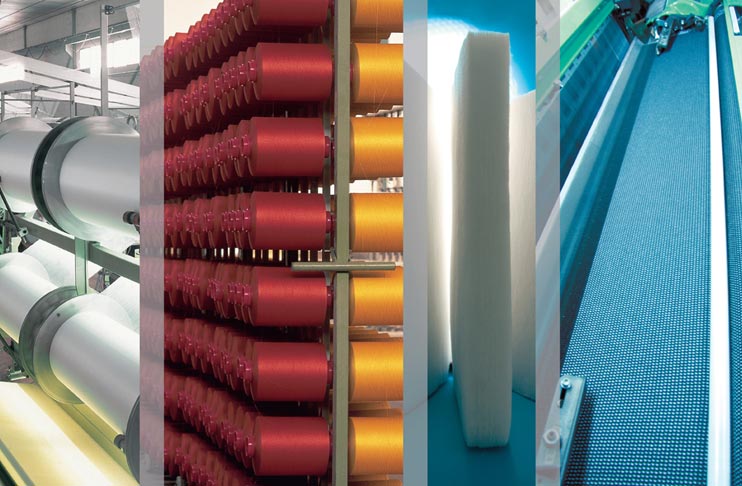
Living very dramatic days in terms of political, social and economical life, Turkey lost its power in general and textile exportation because of the negative events.
Turkey left 2016 behind where it went through many hardships. Aside from the economical fluctuations; increasing terror attacks and coup attempt occured in 15th of July made the year’s burden even heavier. During this period, Turkey’s exportation went down 1,2% compared to 2015 and finished the year with 142 billion dollars. Textile and its raw materials sector on the other hand succedded to finish the year with a less downsizing rate.
Regression in Textile Exportation Felt Slightly
Textile and raw materials sector reached 9,8 billion dollars of worth in 2016 January-December term in export with 0,2 regression. In the last month of the year the sector performed 808 million worth of export with 2,2% increase. In this term, Turkey’s general exportation became 142 billion dolar in 2016, the share of textile and raw materials was 6,9%. The exportation of textile and raw materials sectors reached 2,1 million ton with $4,4 increase on the basis of quantity.
Following a fluctuating course throughout the year, 53,5% of the sector’s exportation was carried out to 28 EU countries. The export carried out to these market during the year reached to 5,2 billion dollars of worth with 7,4% increase. The second important market of the sector was Middle East countries. The exportation performed to Middle East countries during the year recorded as 1,2 billion dollars of worth with 1,4% increase. Turkic republics were the group that the biggest export increase occured in 2016. Exportation to these countries increased at the rate of 20,8. The biggest decrease were Former Eastern Block Countries with 33,7% decrease.
On the basis of country, the most exportation was performed to Germany. Export to Germany valued as 832 million dollars with 2,9% regression. Respectively, Italy(828 million dolar), Bulgaria(629 million dolar), USA (557 million dolar) and Iran(460 million dolar) followed Germany.
Weaving Fabric Exportation Preserved Its Leadership
In the whole of 2016, the textile product that is exported the most was weaving fabric with 25,4%. This segment gained 2,5 billion dollars revenue by losing value at the rate of 4,1% compared to the last year. 43,3% of weaving fabric export was cotton weaving fabrics(1,1 billion dollars).
The second important export item was yarn segment. This group forming 16,7% of textile exportation, gained 1,6 billion dollars of worth. Covering 37% of total yarn export, yarns made of synthetic-artificial filament fibers reached to 606 million dollars of export power.
The third important product line was home textiles forming 16,2% of sector’s total exportation. In 2016, 1,6 billion dollars worth home textiles export is carried out.
Reaching to 1,5 billion dollars of total export number, in knit fabric segment ‘other knit fabric’ range had the share of 53,8% with 809 million dollars revenue.
The division of product groups that took place in textile and raw materials sector’s total export in 2016 is thusly; weaving fabric 24%, yarn 16%, knit fabric 15%, home textile 16%, technical textiles 13%, special yarn and fabrics 7% and fiber 5%. Sector’s biggest product group weaving fabrics reached 2.5 billion dollars of export value with 4,1% value loss.
Home textile fabrics export
Home textile fabrics export valued approximately 453 million dollars by regressing 8,7% on a yearly basis. In this category, the most important export product were drapery textiles with 315 million dolar of worth. Upholstery fabrics had 127 million dollars of export. In 2016, home textiles exportation was 1,8 billion dollars of worth by increasing 2,3%. The most important product range towel and swab exportation reached 640 million dollars of worth by increasing at the rate of 7,8%.
In this period, technical textiles exportation reached to 1,5 billion dollars of worth with 2,2% of increase. In this group, nonwoven exportation had the biggest share. Nonwoven products whose export raised 18,7%, presented 29,3% of technical textiles exportation. The second most important product range were bag and sack for packaging produced from technical textiles, with 312 million dollars of worth.
Fiber export on the other hand, went down to 55 million dollars with 4,8% regression. Forming 61,2% of total fiber export synthetic-artificial fibers had 340 million dollars of share.
In special yarn and fabric exportation category denim fabric export gained 398 million dollars of worth with 4,7% increase. Taking place in this category, plush and knurling fabric group had 185 million dollars of value.
3 Challenges Responsible For Exportation’s Decrease
Attributing the exportation decrease in 2016 to three main challenges (low course of petrol and goods, increase of exchange rate and problems in regional countries), TİM President Mehmet Büyükekşi defended that the effect of these negativenesses was 8,5 billion dollars. Büyükekşi expressed these; “In 2016, we performed approximately 104 million ton exportation on the basis of quantitiy. This number means 4% increase compared to 2015. However, the fact that petrol and goods’ price was lower in 2016 than 2015, dollar’s strong course caused regression of export unit prices in the world.
Export value for per kilogram regressed from 1,44 dollars in 2015 to 1,44 dollars. So, we sold more products in 2016 however received less export revenue. Thusly, the negative effects of regression of exportation prices in 2016, developments occured in regional countries and fluctuations in currency unit valued 8,5 billion dollars. Even though the regression in our export is less than 1% and we have a beter performance than many countries in the world.” Büyükekşi explained that 2017 export goal is 155 billion dolars.


